After a sumptuous breakfast at the hotel, we boarded the luxury bus and drove from Kusadasi to the Smyrna Agora. The Agora of Smyrna is an ancient Roman agora (a public open space used for assemblies and markets), originally built by the Greeks in the 4th century BC, the agora was ruined by an earthquake in 178 AD. Roman Emperor Marcus Aurelius ordered its reconstruction. In 2020, the Agora of Smyrna became a Tentative World Heritage Site as part of “The Historical Port City of Izmir.”
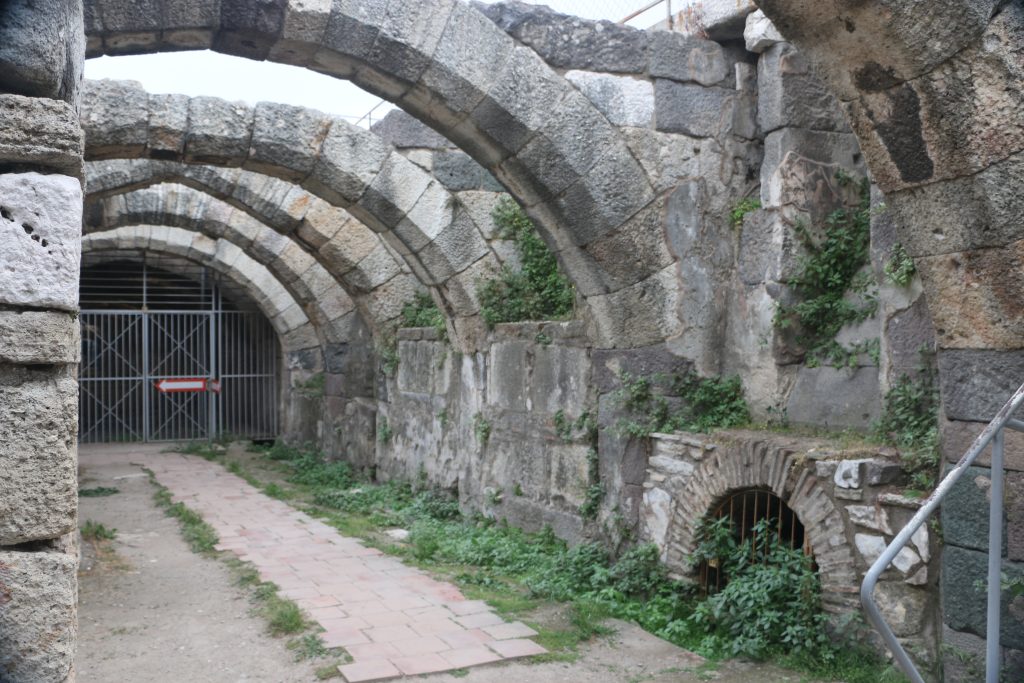
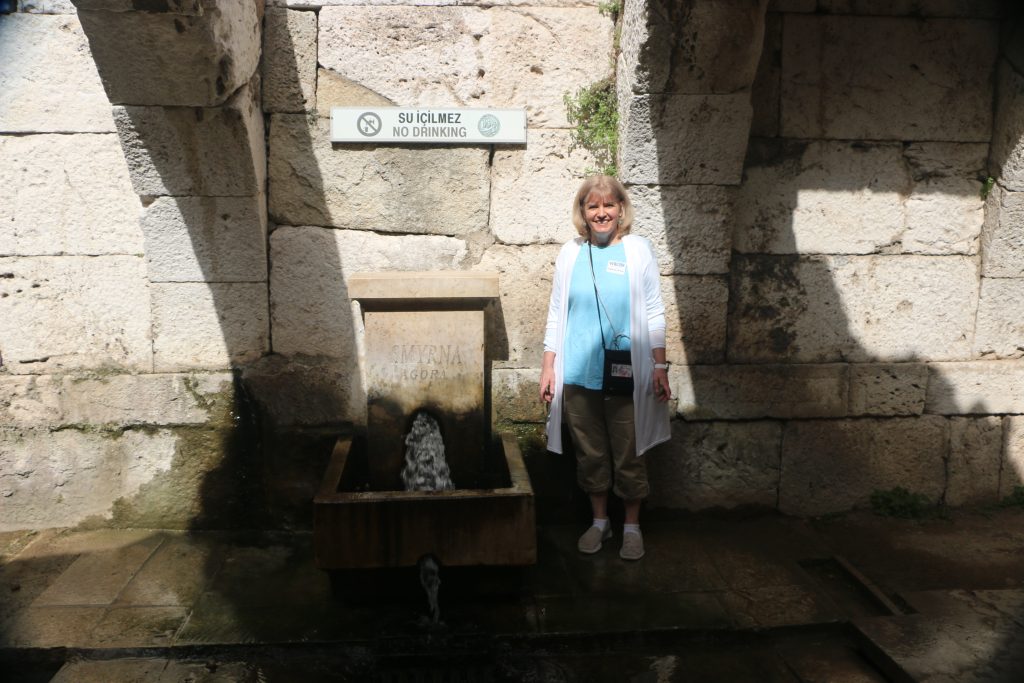
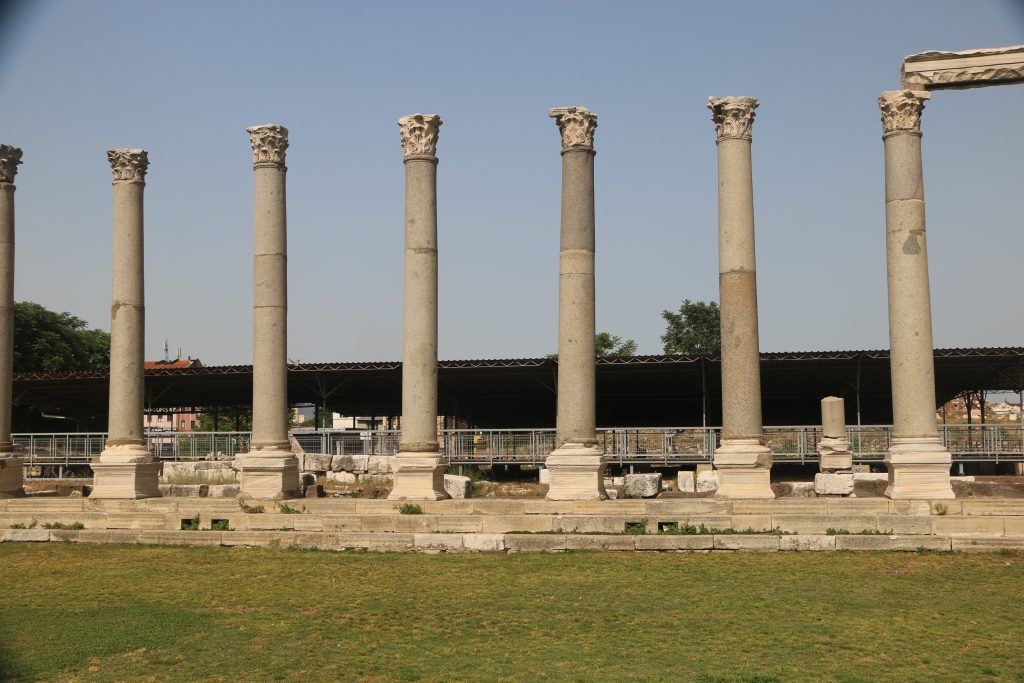
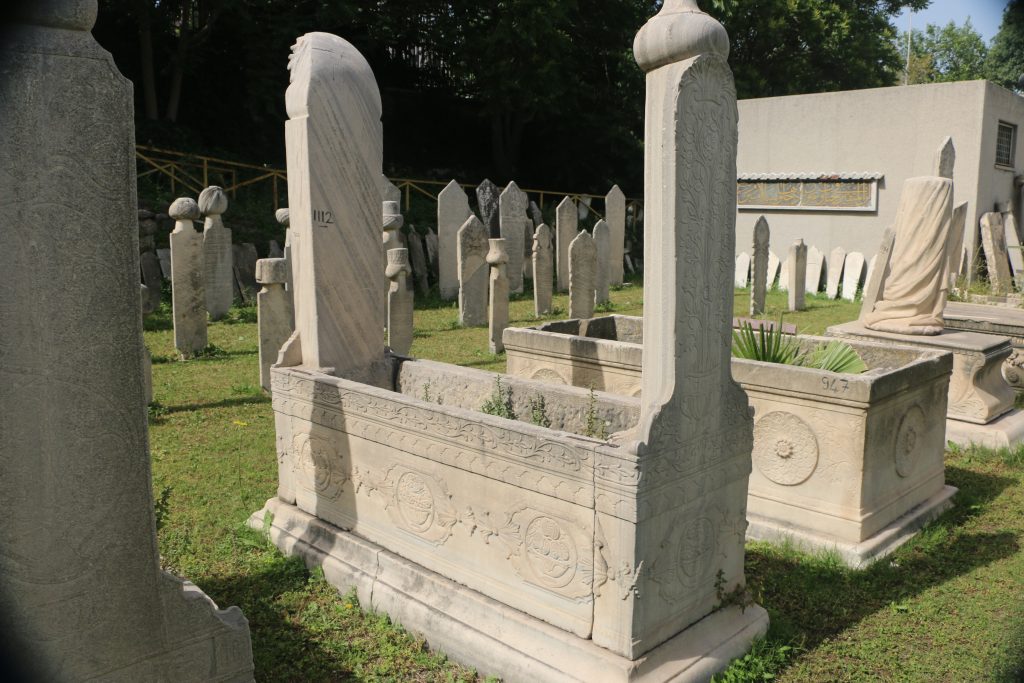
After touring this amazing historical site, including a fountain that has been running since Roman times, we got back on the bus and headed for the the House of the Virgin Mary, a Catholic shrine located on Mt. Koressos in near Ephesus. Catholics believe this house, whose foundation dates to the 4th Century, is where Mary, the mother of Jesus, lived after Jesus crucifixion.
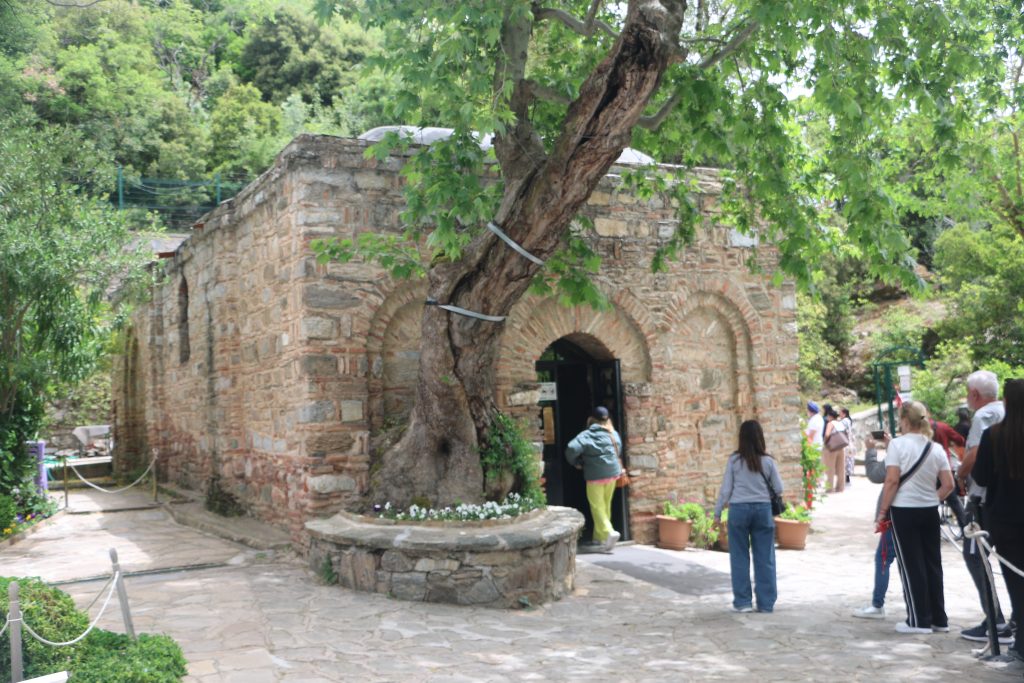
To us, it’s just a 1600-year-old house. From here were drove down the mountain to the sprawling town of 1st Century Ephesus. The first thing you notice is how large it is. The second thing is the architecture. In several places throughout the city, carved into the stone, is some iconography that is easily identified as having been chiseled by 1st Century Christians (see below). There are four symbols in the stone that, when assembled, are depicted by the large round icon on the left. The Greek letters “ΙΧΘΥΣ” stand for “Jesus Christ, God’s Son, Savior” (Iēsous Christos Theou Huios Sōtēr.)
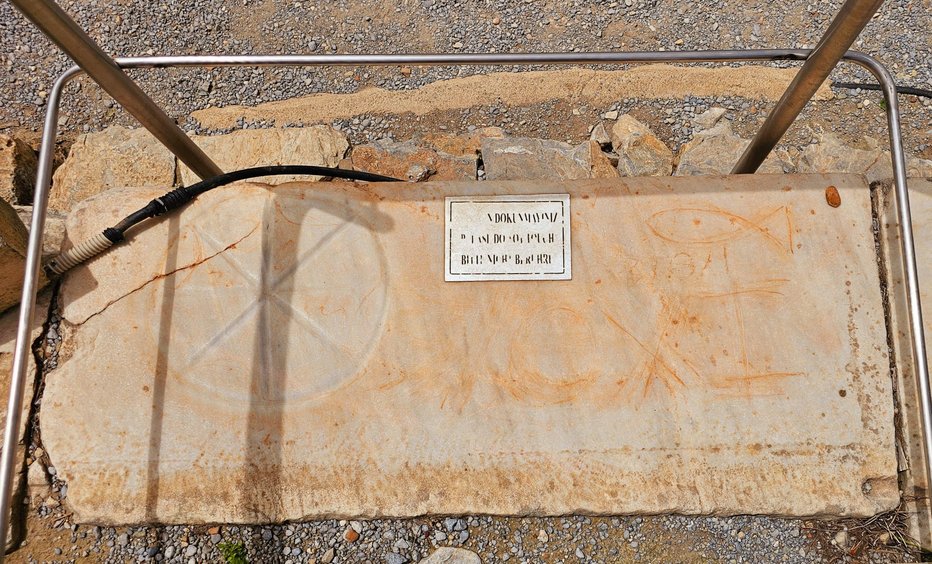
After walking down a marble street, on stones that Paul likely walked on several times, we saw the iconic facade to the library. Ephesus boasted the 3rd largest library, outside Alexandria and Constantinople.
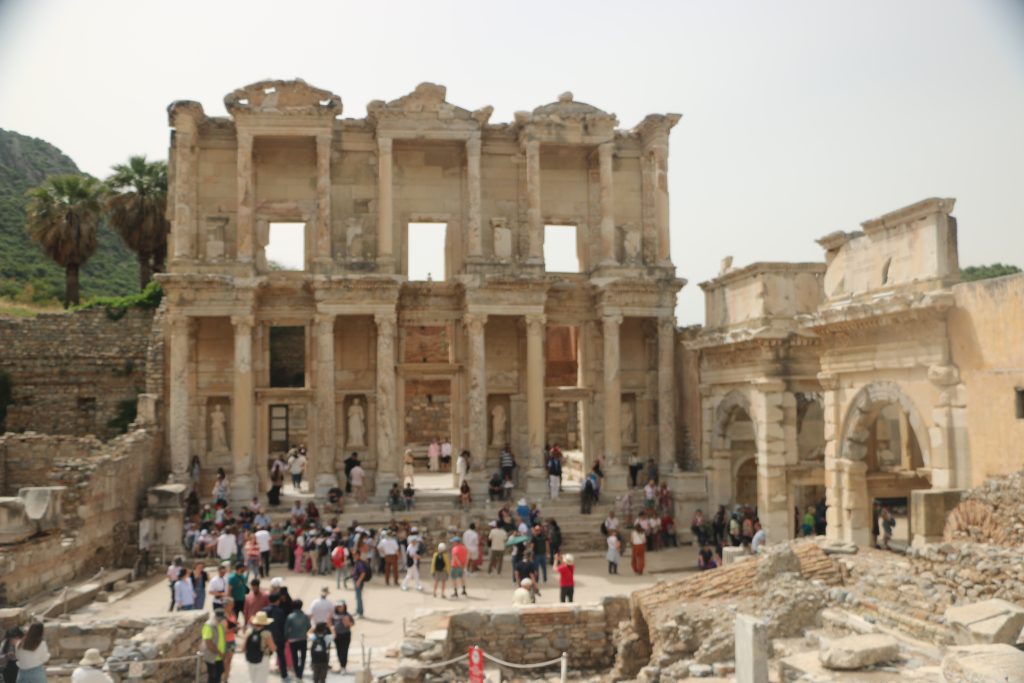
The Library is an impressive structure, but when you get to it, that’s only halfway through the city. Archeologists are working on uncovering and rebuilding the large amphitheater that graced the city, seating up to 24,000 people.
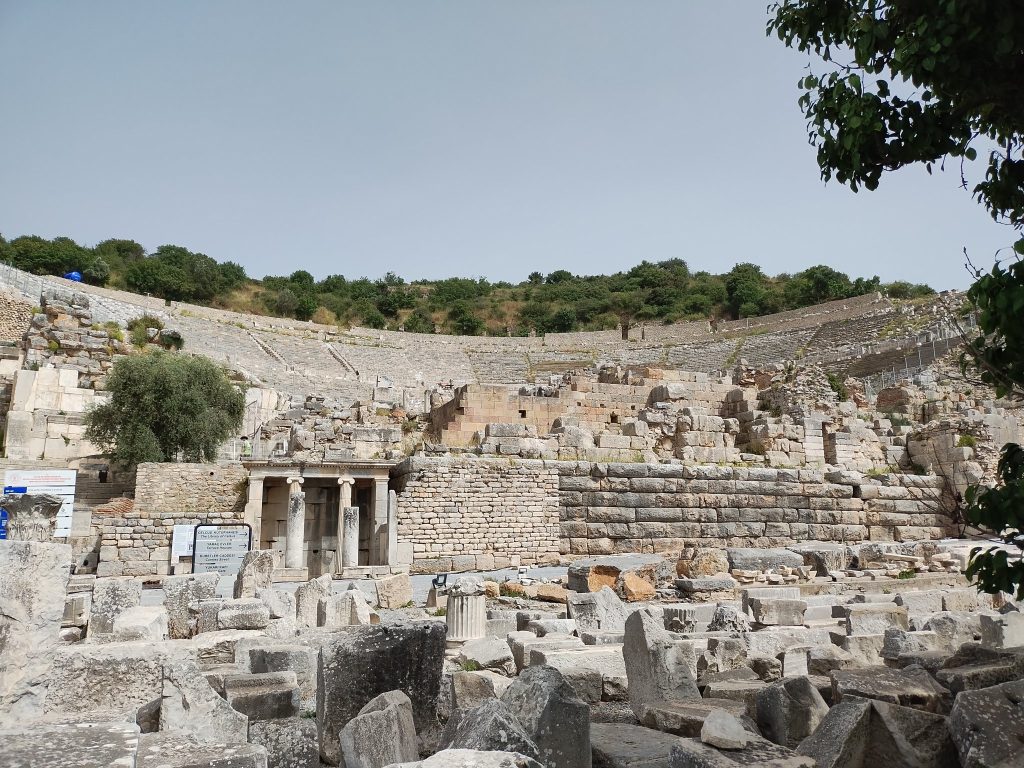
Three pastors gave devotionals related to the book of Ephesians and to Revelation. After we walked through this very large outdoor museum of Ephesus, where archaeologists are still unearthing finds, and construction crews work hard to rejuvenate and preserve.
I found a video of what Ephesus may have been like in the Roman period:
After Ephesus, we went to a different part of modern-day “Efes” to the Basilica of St. John. This was a basilica constructed by Justinian I in the 6th century at a site where some believe the Apostle John is buried. The entire area had been walled-in for protection. The basilica itself is very large.
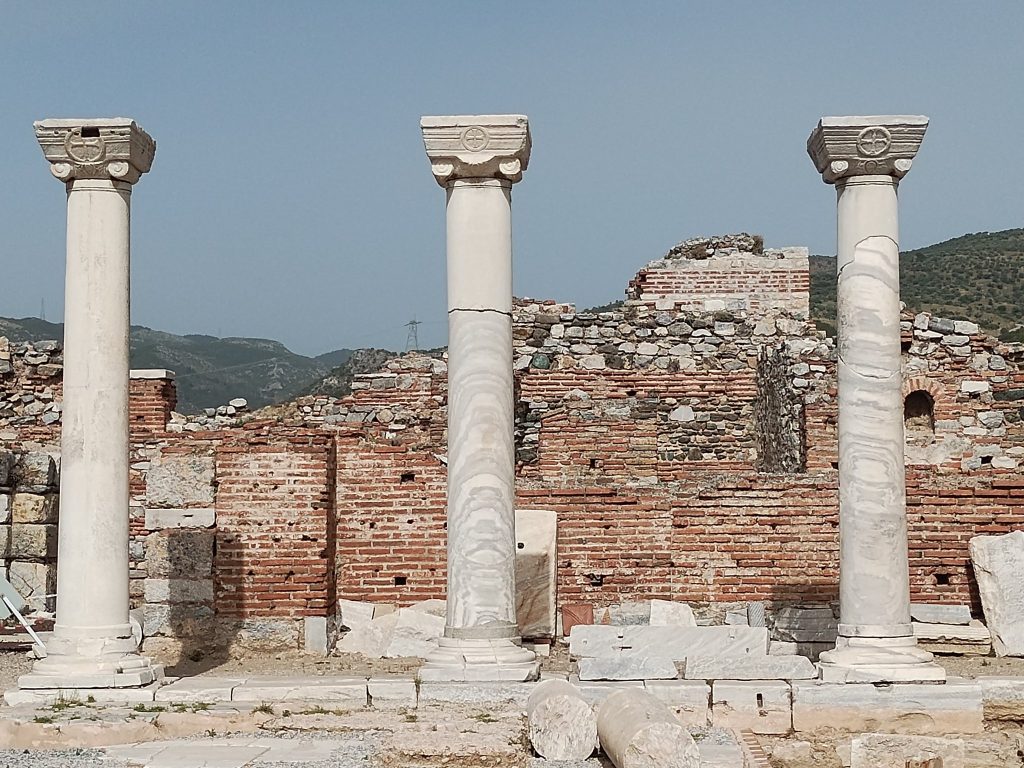
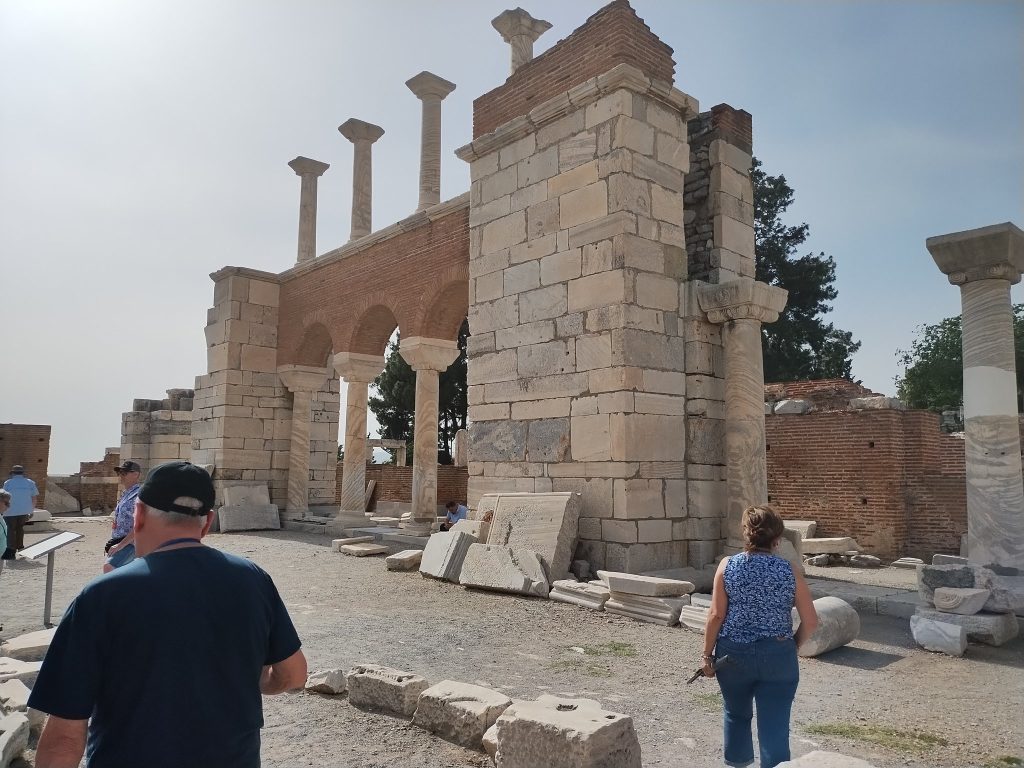
The Basilica was destroyed by an earthquake, and after the formation of the Turkish Republic in 1923, parts of the basilica were rebuilt with financial support from religious foundations in the United States. Ephesus was added to the UNESCO World Heritage List in 2015. Not far from the Basilica is the Selçuk Castle. The castle was built by the Byzantines on the highest place of Ayasuluk Hill and the inner castle city walls belong to the Seljuk-Ottoman periods.
After we left Ephesus, we returned to the hotel for showers, dinner, and some much-needed sleep. Tomorrow we board the ship to sail to Patmos, where the Apostle John was exiled, and where he wrote the book of Revelation.
